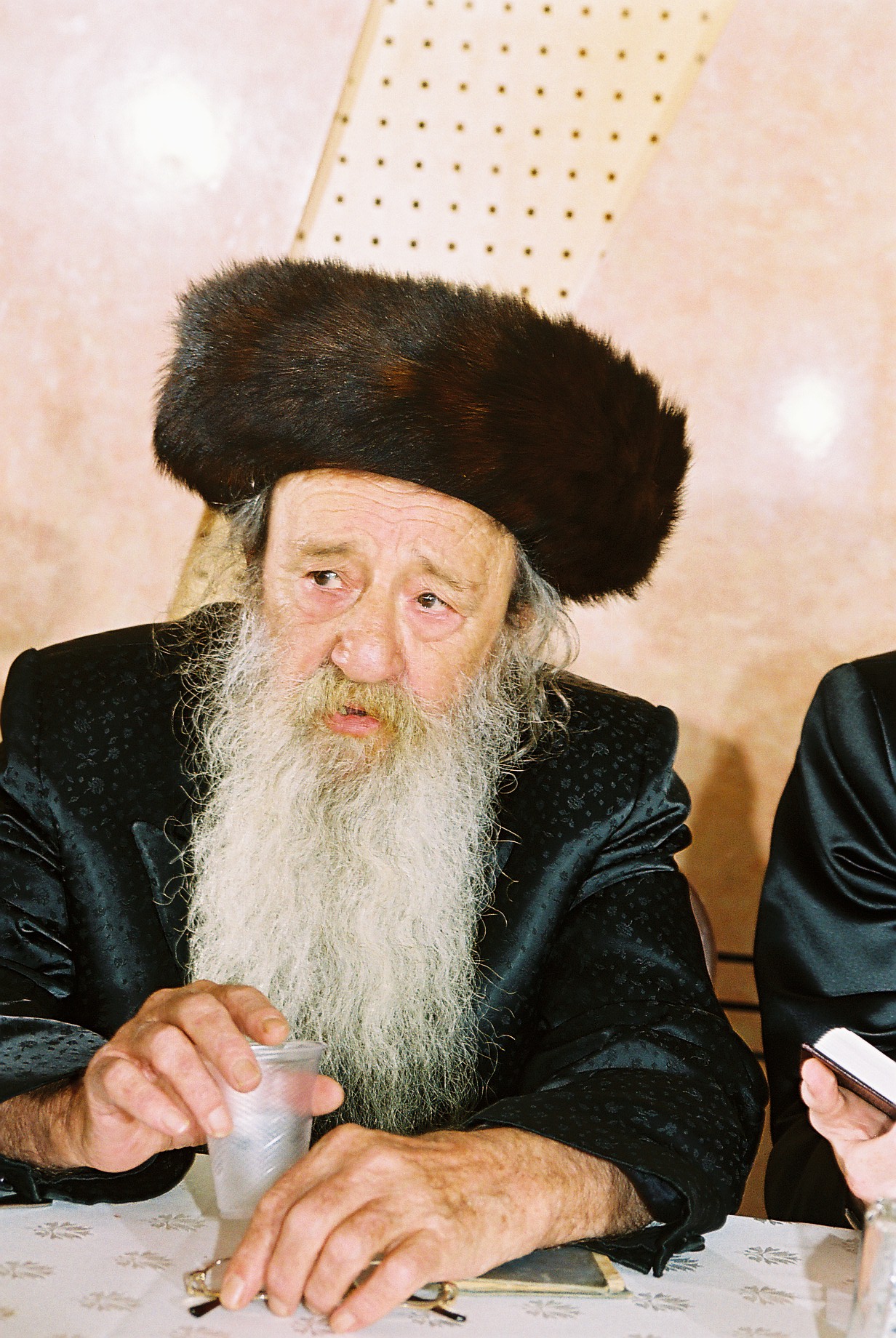Shtreimel on:
[Wikipedia]
[Google]
[Amazon]

 A shtreimel ( yi, שטרײַמל , plural: or ) is a fur hat worn by some
A shtreimel ( yi, שטרײַמל , plural: or ) is a fur hat worn by some

 Shtreimels worn by the Hasidim of Galicia,
Shtreimels worn by the Hasidim of Galicia,

 A shtreimel ( yi, שטרײַמל , plural: or ) is a fur hat worn by some
A shtreimel ( yi, שטרײַמל , plural: or ) is a fur hat worn by some Ashkenazi
Ashkenazi Jews ( ; he, יְהוּדֵי אַשְׁכְּנַז, translit=Yehudei Ashkenaz, ; yi, אַשכּנזישע ייִדן, Ashkenazishe Yidn), also known as Ashkenazic Jews or ''Ashkenazim'',, Ashkenazi Hebrew pronunciation: , singu ...
Jewish
Jews ( he, יְהוּדִים, , ) or Jewish people are an ethnoreligious group and nation originating from the Israelites Israelite origins and kingdom: "The first act in the long drama of Jewish history is the age of the Israelites""The ...
men, mainly members of Hasidic Judaism
Hasidism, sometimes spelled Chassidism, and also known as Hasidic Judaism ( Ashkenazi Hebrew: חסידות ''Ḥăsīdus'', ; originally, "piety"), is a Jewish religious group that arose as a spiritual revival movement in the territory of cont ...
, on Shabbat and Jewish holidays
Jewish holidays, also known as Jewish festivals or ''Yamim Tovim'' ( he, ימים טובים, , Good Days, or singular , in transliterated Hebrew []), are holidays observed in Judaism and by JewsThis article focuses on practices of mainst ...
and other festive occasions. In Jerusalem, the shtreimel is also worn by Litvak Jews (non-Hasidim who belong to the original Ashkenazi community of Jerusalem, also known as Perushim
The ''perushim'' ( he, פרושים) were Jewish disciples of the Vilna Gaon, Elijah ben Solomon Zalman, who left Lithuania at the beginning of the 19th century to settle in the Land of Israel, which was then part of Ottoman Syria under Ott ...
). The shtreimel is generally worn after marriage, although it may be worn by boys after bar-mitzvah age in some communities.
History
There is speculation surrounding the origin of the shtreimel. Different theories hold that it is ofTatar
The Tatars ()Tatar
in the Collins English Dictionary is an umbrella term for different
, Turkish, Russian, or Polish origin, but it is not possible to establish a clear chronology. A common view is that the shtreimel was adapted by Jews living in Europe as a warm winter hat, possibly inspired by nobility; the shtreimel is comparable in construction to fur hats historically worn by nobles or gentiles across Europe, Scandinavia and Russia. According to the Jewish Historical Institute in Warsaw, the shtreimel could come from a period in the 17th century when Oriental costumes were considered fashionable by the nobility of the in the Collins English Dictionary is an umbrella term for different
Polish–Lithuanian Commonwealth
The Polish–Lithuanian Commonwealth, formally known as the Kingdom of Poland and the Grand Duchy of Lithuania, and, after 1791, as the Commonwealth of Poland, was a bi-confederal state, sometimes called a federation, of Crown of the Kingdom of ...
( Sarmatism). One legend says that the initial reason for adopting the shtreimel was that the Jews were forced to wear an animal tail as a public humiliation.
Types of ''shtreimels''

 Shtreimels worn by the Hasidim of Galicia,
Shtreimels worn by the Hasidim of Galicia, Romania
Romania ( ; ro, România ) is a country located at the crossroads of Central Europe, Central, Eastern Europe, Eastern, and Southeast Europe, Southeastern Europe. It borders Bulgaria to the south, Ukraine to the north, Hungary to the west, S ...
, and Hungary
Hungary ( hu, Magyarország ) is a landlocked country in Central Europe. Spanning of the Carpathian Basin, it is bordered by Slovakia to the north, Ukraine to the northeast, Romania to the east and southeast, Serbia to the south, Cr ...
, and Lithuanian Jews up until the 20th century were made of a large circular piece of black velvet surrounded by fur. The shtreimel of Menachem Mendel Schneersohn (also known as the ''Tzemach Tzedek'') was white velvet. Hasidim originating from Congress Poland wear a high shtreimel (often called a spodik). The shtreimel of the Rebbe
A Rebbe ( yi, רבי, translit=rebe) or Admor ( he, אדמו״ר) is the spiritual leader in the Hasidic movement, and the personalities of its dynasties.Heilman, Samuel"The Rebbe and the Resurgence of Orthodox Judaism."''Religion and Spiritu ...
s of the Ruzhin and Skolye dynasties is pointed upward.
Symbolism
While there is strong religious custom for Jewish males to cover their heads, from the standpoint of Jewish law there is no religious significance to the use of the shtreimel as the head covering. However, the wearing of two head coverings (the shtreimel is always worn over a '' yarmulke'') is considered to add additional spiritual merit, plus the presence of beautiful craftsmanship adds beautification and honour to the custom. Such headgear is worn on special occasions (such as Shabbat), in the synagogue, or by office-holders such as rabbis. According to Rabbi Aaron Wertheim, Rabbi Pinchas of Koretz (1726–1791) stated that " e acronym for Shabbos is: ''Shtreimel Bimkom Tefillin'' - the shtreimel takes the place oftefillin
Tefillin (; Modern Hebrew language, Israeli Hebrew: / ; Ashkenazim, Ashkenazic pronunciation: ), or phylacteries, are a set of small black leather boxes with leather straps containing scrolls of parchment inscribed with verses from the Torah. Te ...
."Halachos V'halichos B'chasidus, p. 196 Since wearing special clothing on Shabbat is a form of sanctification, among the Hasidim of Galicia and Hungary the shtreimel is associated with the holiness of Shabbat, a crown such as that worn by royalty, which enhances and beautifies Shabbat.
Arnon asserts that the number of furs used in the manufacture of the shtreimel has some significance. Common numbers are 13, 18, and 26, corresponding respectively to the Thirteen Attributes of Mercy, the numerical value ( gematria) of the word for life ( he, חי), and the numerical value of the Tetragrammaton
The Tetragrammaton (; ), or Tetragram, is the four-letter Hebrew theonym (transliterated as YHWH), the name of God in the Hebrew Bible. The four letters, written and read from right to left (in Hebrew), are ''yodh'', '' he'', '' waw'', and ...
.Arnon, p.88 Contemporary ''shtreimlach'' may include higher numbers of tails. At least one maker creates shtreimelach with 42 tails, symbolizing the 42-letter Divine Name.
Male Orthodox Jews can be highly conservative regarding headgear, and some traditional Jews still wear fedoras or homburgs. Although the traditional Jewish headgear is of Gentile origin and has specific historical and geographical roots, it continues to be worn by traditional Jews even when non-Jews in the country of origin have long stopped wearing it.
Manufacture
The shtreimel is typically custom-made from the tails of Canadian or Russiansable
The sable (''Martes zibellina'') is a species of marten, a small omnivorous mammal primarily inhabiting the forest environments of Russia, from the Ural Mountains throughout Siberia, and northern Mongolia. Its habitat also borders eastern Kaza ...
, beech marten, baum marten ( European pine marten), or gray fox. The shtreimel is almost always the most costly article of Hasidic clothing. Usually the bride's father purchases the shtreimel for the groom upon his wedding. Nowadays, it is customary in the United States to purchase two shtreimels: a cheaper version, called the ''regen'' shtreimel ("rain shtreimel"), is for occasions when the expensive one may get damaged. In Israel, due to the economic circumstances of most members of the Hasidic community in that country, the vast majority of shtreimel-wearers own only one shtreimel. The shtreimel manufacturers (''shtreimel machers'') keep their trade a closely guarded secret.Arnon p.208
See also
* Kolpik * SpodikReferences
Citations
General bibliography
* *External links
* {{Hats Fur Hasidic clothing Hats Jewish religious clothing Jewish ritual objects Religious headgear